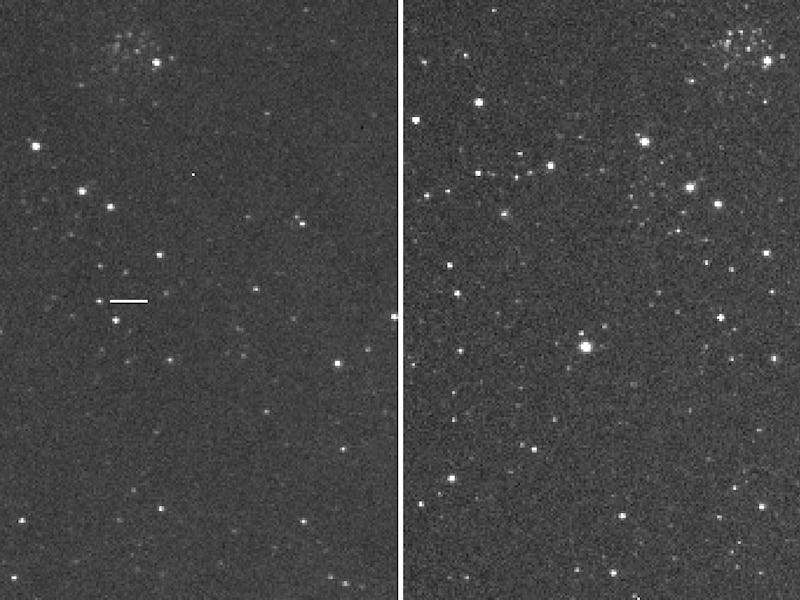Cassiopeia: You need to see the brightest nova in the sky right now
All you need is a good pair of binoculars to see an explosive sky show.

There’s something new and bright lurking in the night sky — and you can see it in your backyard.
An amateur astronomer in Japan recently discovered a nova in the constellation Cassiopeia involving a white dwarf star that’s sucking matter from a companion star, appearing as a bright outburst. And it’s visible to observers across the northern hemisphere.
On March 18, Japanese amateur astronomer Yuji Nakamura spotted something odd while observing Cassiopeia, a familiar constellation in the northern sky.
It appeared that the constellation had a new source of light. Follow-up observations by researchers from Kyoto University and the National Astronomical Observatory of Japan (NAOJ) revealed that it was a classic nova, according to the Astronomer’s Telegram. The distance of the nova from Earth is not yet known.
“Since we cannot predict when and in what direction novae will occur, discoveries by amateur astronomers contribute significantly to our understanding of the phenomena,” the NAOJ says in a press release.
How to see the Cassiopeia nova
Using a pair of binoculars, look for the letter W to identify the constellation Cassiopeia. If you live in the northern hemisphere, it will appear in the northwestern sky after sunset. It will be east of the Big Dipper, and near Polaris, the north star. EarthSky has a handy guide on finding Cassiopeia.
The two bright stars that form the right end of the W shape of Cassiopeia point directly towards the newly discovered nova, according to Popular Astronomy.
The new nova appears in Cassiopeia, pictured here.
Get as far away from city lights as possible. If you can’t leave the city, make sure you get to an elevated surface like a rooftop in order to observe the nova. Also, avoid staring at bright screens or any source of bright light in order to get your eyes accustomed to the dark.
The nova will appear as a bright flash of light.
Here’s the background — A classical nova is the sudden appearance of a bright outburst that involves a white dwarf star and a companion star.
The nova, PNV J23244760+6111140, is currently increasing in brightness. When it was first observed, it had a magnitude of 9.6 and later went up to a magnitude of 9.1 within hours (the brighter an object appears, the lower the number is). A magnitude around 9 is what can be seen by binoculars.
The next day, it had increased to a magnitude of 7.8, according to the Central Bureau of Astronomical Telegrams. That puts it barely inside naked-eye viewing under the best conditions (assuming a dark sky with little light pollution), but a pair of binoculars will reveal the splendor of the event to observers that don’t have that kind of access. The nova will likely continue to brighten in the coming days.
A side by side of the same region of the sky, with the right side showing just four days before the observed nova appeared in the astronomer’s view.
What is a nova?
Classical nova eruptions take place in binary star systems.
One of the stars is always a white dwarf star, which is an object formed when stars like the Sun use up all of their fuel, expelling most of their outer material to become a dense core of electron matter.
The other star is usually a star like the Sun or a red giant. Red giants are stars like the Sun that have expanded their outer layers but have yet to become a white dwarf.
A nova occurs when a white dwarf star’s powerful gravitational tug begins to suck the hydrogen gas from its companion star into an accretion disk. That accretion disk covers the white dwarf in a layer of hydrogen, becomes compacted, and subsequently heats up to around 10 million Kelvin, which is hot enough to trigger an explosive nuclear fusion, according to Sky and Telescope.
The majority of the material is then blasted off into space in an expanding shape that resembles that of a shell.
How long will the Cassiopeia nova last?
The newly discovered nova has material being ejected from it at a speed of 3.6 million miles per hour, according to the National Astronomical Observatory of Japan.
It’s hard to tell how long nova will last. It can be a few days, a few weeks, or a few months. The Cassiopeia nova appears to be in a brightening phase, meaning it could grow brighter. But it could fade away just as quickly, so now is a great time to look and to see the powerful cosmic event in action.
This article was originally published on